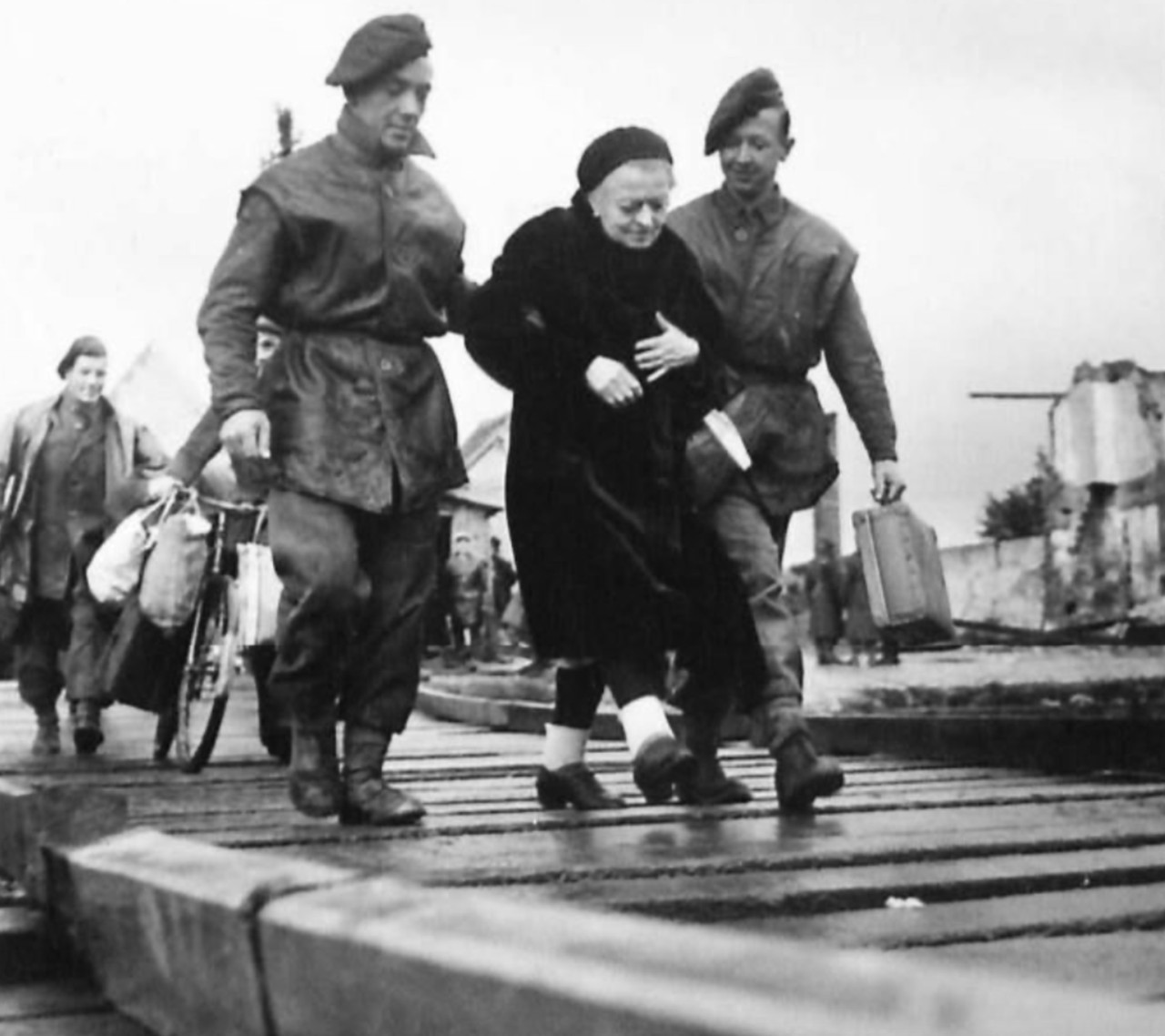The Black Watch arrived in the village of Grand Millebrugge having left Bourgbourg. The Canadian soldiers commented on how the village had the title of ‘Grand’ but they found nothing more than a few rows of houses either side of the canal. The Colme Canal ran straight through the middle of the village, and German forces had destroyed most of the bridges that had crossed it. The Black Watch swiftly secured the town with no German resistance. However, shortly after this, German forces began to shell the village with mortars and 88mm shells. Most of the Canadian soldiers were able to seek immediate shelter in buildings.
The German forces, as well as destroying bridges, had also destroyed some of the canal banks. The fields around the village had become a quagmire, some completely underwater. This meant that movement was restricted to the roads and the Canadian forces were unable to setup their own artillery positions. The task of the Black Watch in this area was to contain the German forces in the area of Dunkirk.
On 10 September, the German forces opened fire at 05:30 with artillery shells. This began to destroy the roads, which were covered with shell holes. One of their universal carriers had been hit by a mine the previous day, killing Corporal Thomas Simpson and Private John Wilson. Both are buried at the Calais Canadian War Cemetery. During the day, the Pioneer platoon constructed a new bridge across the canal to allow the Black Watch to get across to the northern side. Later in that day the shelling of the town became greater, it was believed the German forces had turned the large coastal guns around and were now firing inland.
On 11 September a night patrol crossed the canal and carried out reconnaissance of the village of Spycker. This village is 2km northeast of Grand Millebrugge. On 12 September B and C companies of the Black Watch carried out an attack to capture the village. They were greeted with strong German resistance, more so with a counterattack. It was noted that Lieutenant Nixon of the Scout platoon played an instrumental role in repelling these attacks by firing three PIAT bombs into the attackers.
On 13 September she Black Watch positioned at Spyker and Grand Millebrugge were slowly relieved by other Canadian troops. The following day they had withdrawn back to Bourgbourgville. There would be little movement from this frontline position until the end of the war as German forces held out in Dunkirk.
